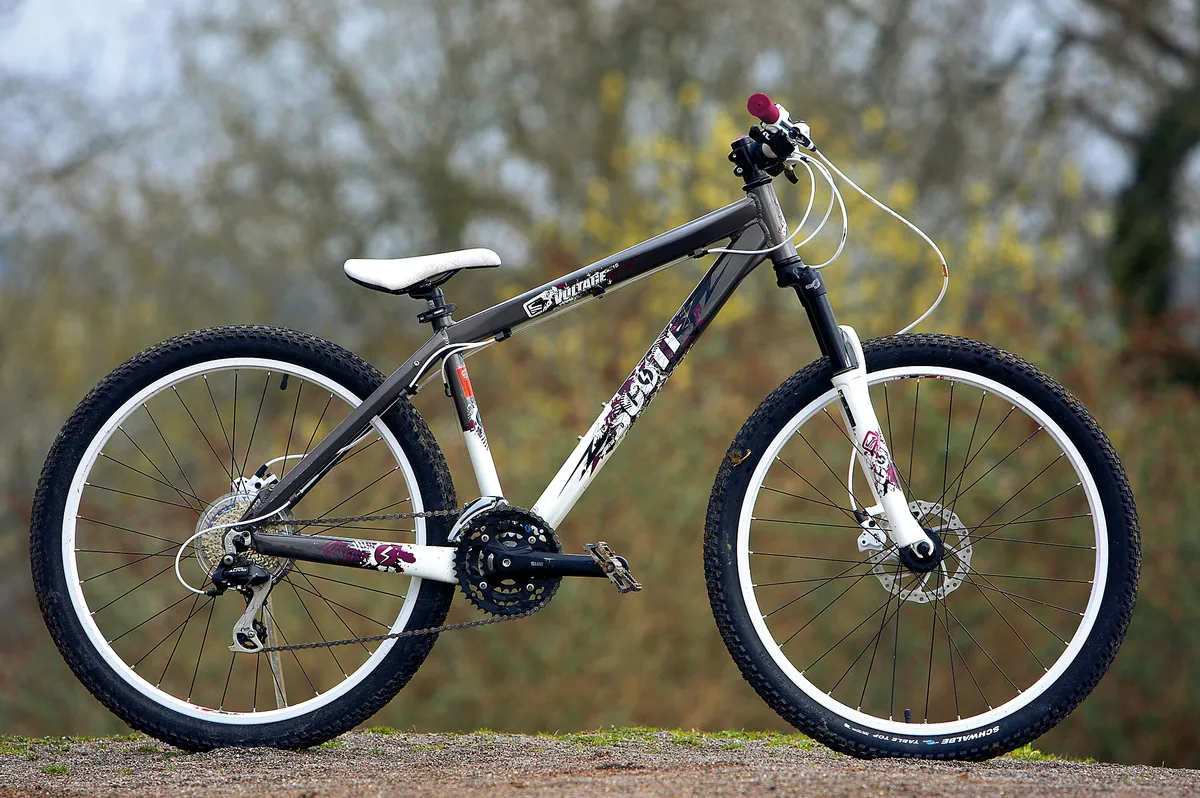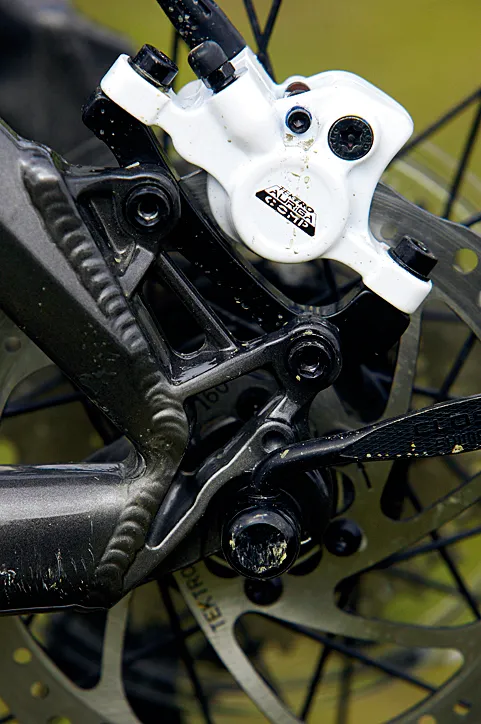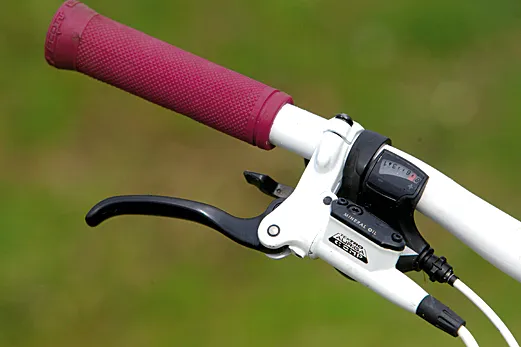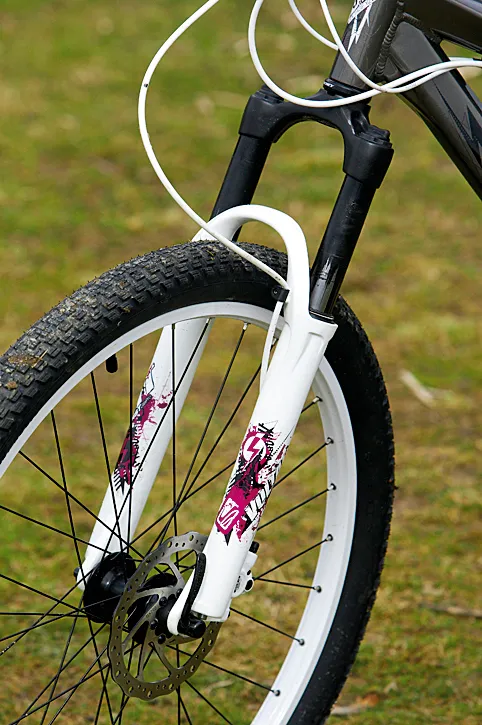Scott have had a long involvement in the dirt jump scene, particularly with hero of the skies Timo Pritzel. They've also had a long relationship with aluminium tubes, because their first products were aluminium ski poles, over half a century ago. The mad profile tubes found on the Voltage range of bikes show just how far the company have come since that time.
Ride & handling: Poor fork ruins play and jump bike potential
The YZ 15 is a very small bike. Our size medium sample had an effective top tube length of just 21.75in. With the diddy 40mm stem this made the cockpit incredibly cramped, not helped by the 640mm handlebar being way too narrow.
While the YZ 15 is aimed at dirt jumpers, most riders want a bike they can ride to the trails as well as through them, and this mini-bike feel made any kind of pedalling on the Scott a chore. Out-of-the-saddle climbing on such a short and narrow set-up was ineffective and inefficient.
Once into the fun stuff, the quality of the frame is suppressed beyond comprehension by the underperforming Scott-branded RST Gila fork. A linear action makes it dive through corners, and compressions, and the flexible chassis make steering inputs vague.
The rebound stroke is wildly uncontrolled and is met with a disconcerting clunk every time the fork tops out. The fork doesn’t absorb any impact from the ground, it merely isolates you from it. In doing so it also isolates any feeling you get as feedback through the bar, leaving you guessing as to whether you have traction or not.
Things get worse as you get airborne. The top-out whack is so severe out of a jump that you have to grip extra tight just to keep hold of the bars. Quality is lacking, too. The black coating wore off the stanchions during our test period, exposing bare steel underneath, which will quickly rust.
This is a real shame because every now and then you can feel that lurking behind that terrible fork there’s a quality frame longing to show what it can do. Through flat turns on a smooth trail, the spot-on 69-degree head angle and short, stiff rear triangle are able to shine through without the fork smothering the bike’s true potential.
In the jump park, that compact, solid back end helps build speed quickly when manualing through the pump track. In the dirt jumps we wound on full preload to compensate for that linear fork dive. The downside to this was even more top-out trauma.
It’s predictable top-out through the jumps though, so isn’t as detrimental to performance as on the trail. Once the bike was off the lip you could feel the dirt jump bike heritage. The bike was easy to control, tuck and nose into the landing.
It’s a shame that a good dirt jump frame is let down so badly by just two components. It just so happens that those two components are the most important for ride quality and feel – the fork and handlebar.
Frame & equipment: Top-class hydroformed frame adorned with questionable equipment
The YZ 15’s frame is striking to say the least. The base material for this work of hydroformed art is 6061 aluminium. The material is then manipulated into a plethora of cross-sections and profiles. A strengthening faux gusset is formed into the underside of the down tube at the join to the comparatively plain head tube.
The rear dropouts are wonderfully neat 3D forged numbers that wouldn’t look out of place on a bike three times the price of this one. Both seatstays and chainstays are massive in section yet, despite this bulk, the Voltage YZ 15 surprisingly still manages to come in fairly light (for an entry-level jump bike), at 14.91kg (32.9lb).
Clearly a large proportion of Scott’s spend on the YZ 15 went on that artfully created frame. The budget build is most evident in the fork, which looks malnourished, with skinny 30mm stanchions and a weedy crown. 100mm (3.9in) of undamped travel is achieved through a coil spring with external pre-load adjusters.
Acera shifters and an Alivio rear mech have Shimano’s usual slick precision, and a triple chainset up front gives a full house of 24 gears. Tektro Auriga Comp brakes are commonplace on budget bikes and give reasonable performance. Unfortunately, the long lever blade made it impossible to set up for one-finger braking and still be able to reach the shifters.
A neat and suitably short 40mm Scott stem is a good choice, but the narrow 640mm bars aren’t man enough for a bike like this.




